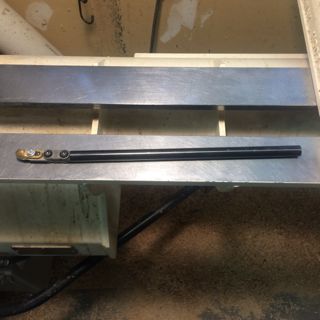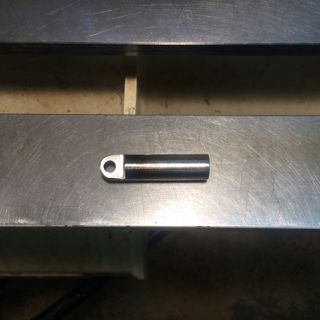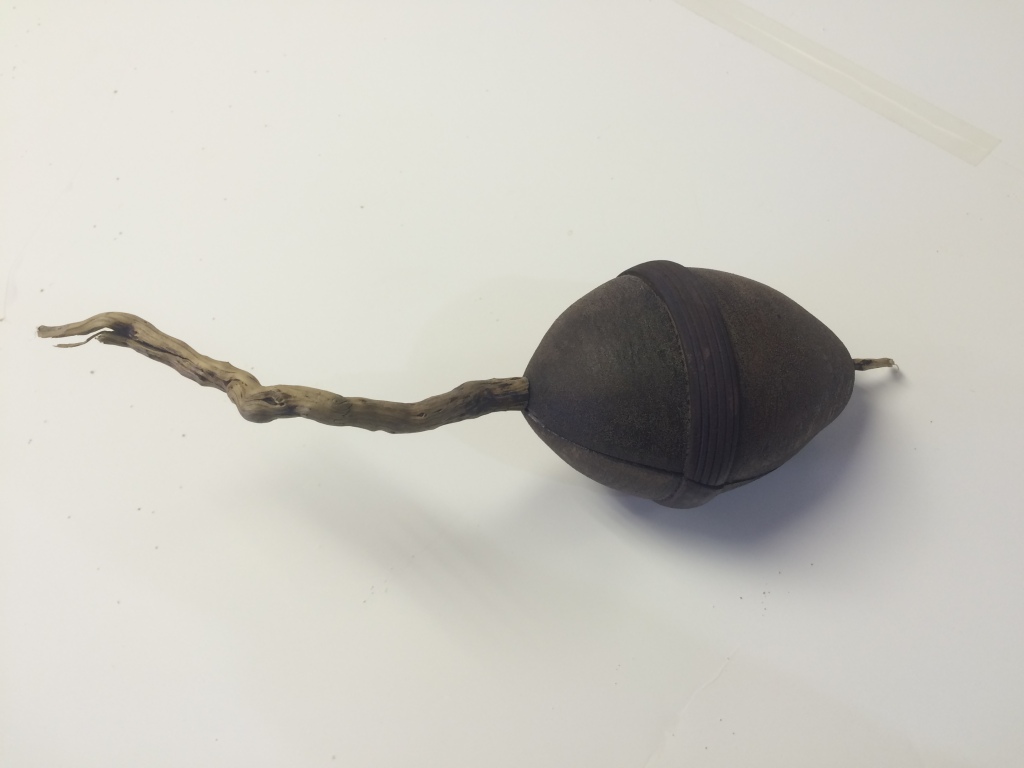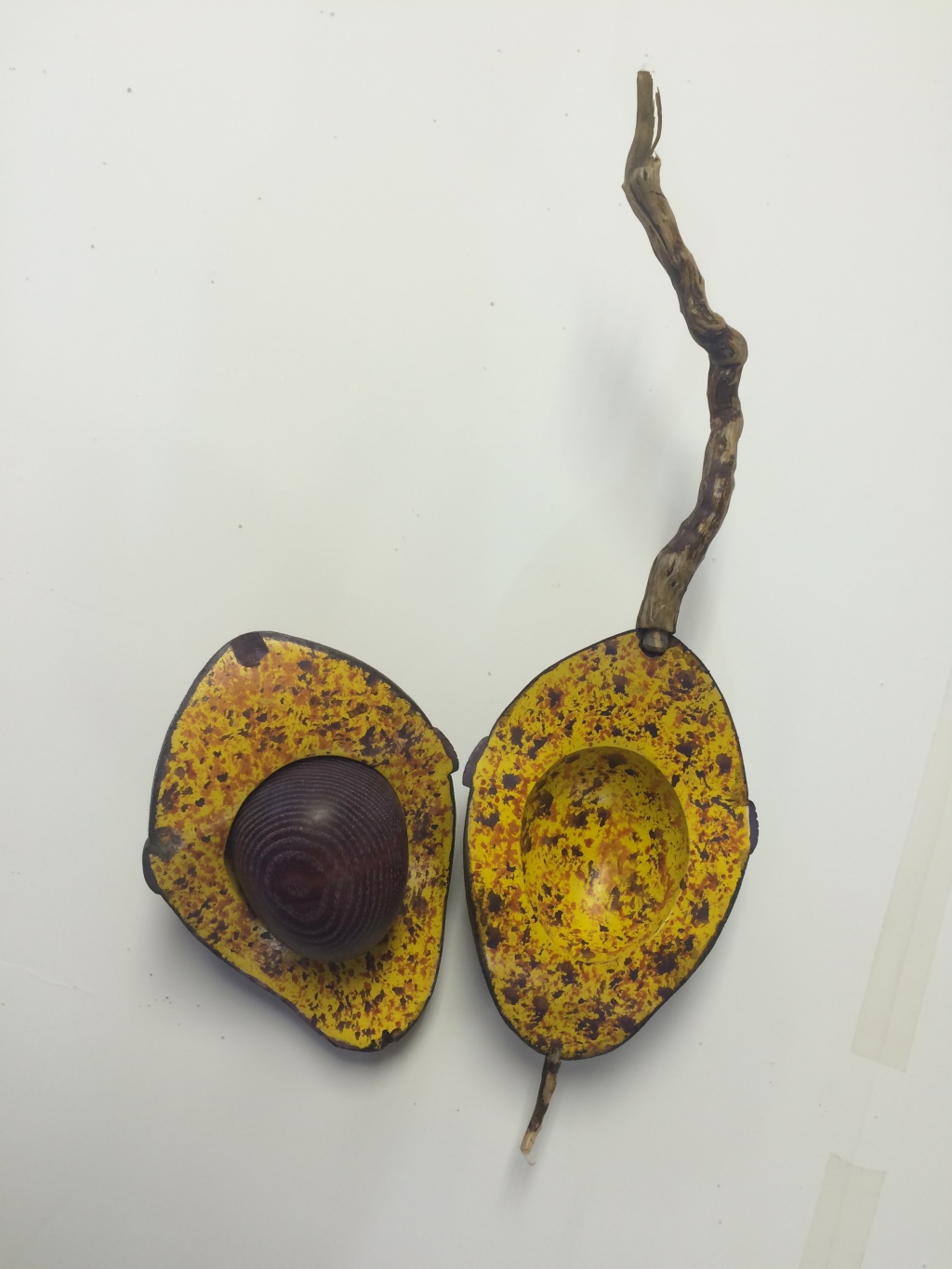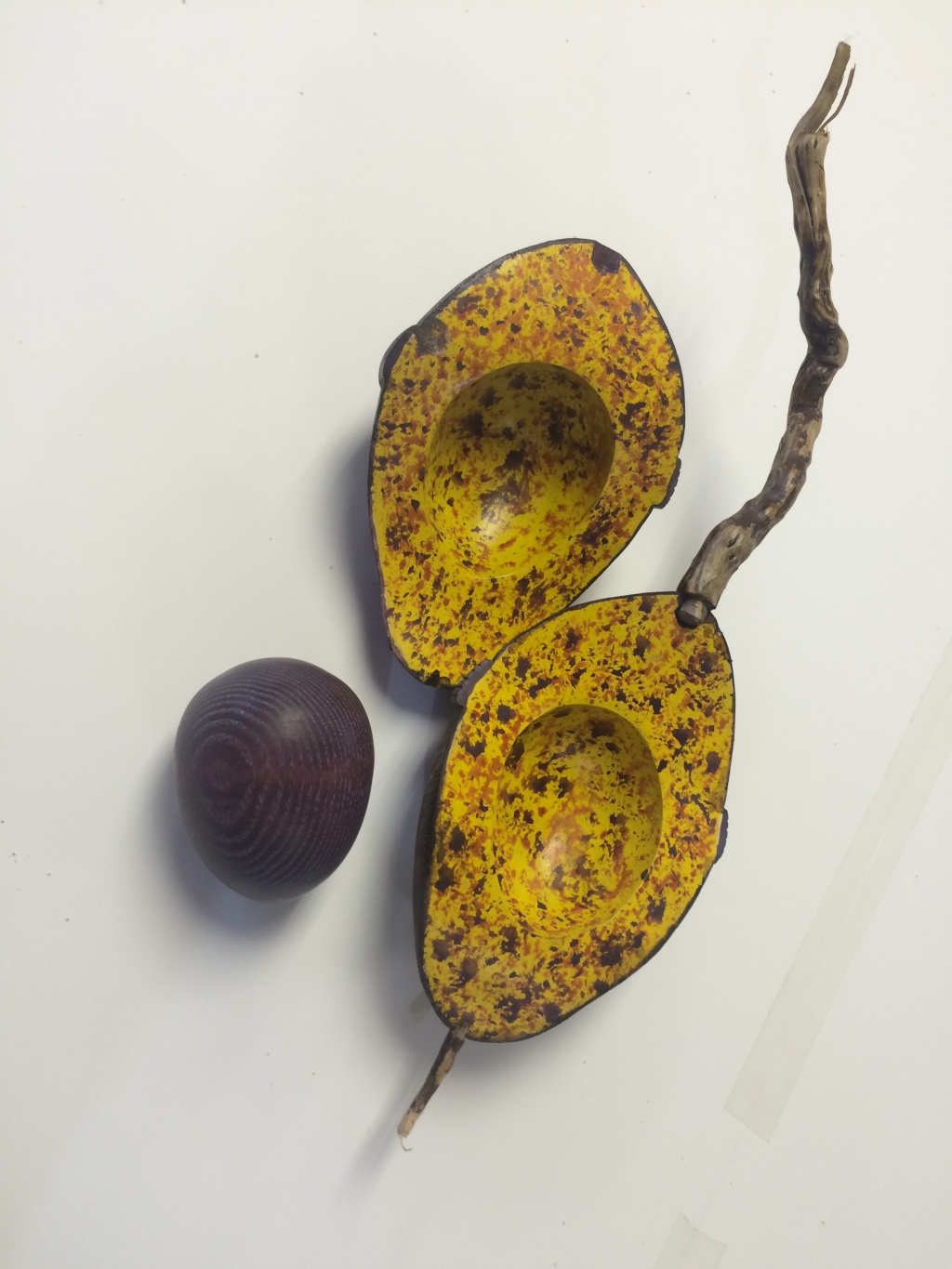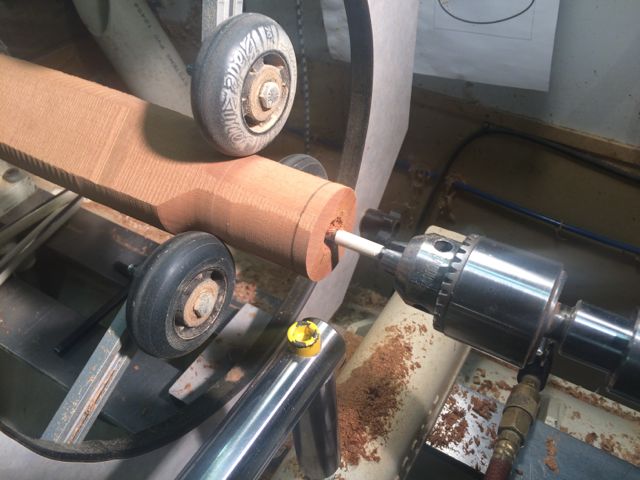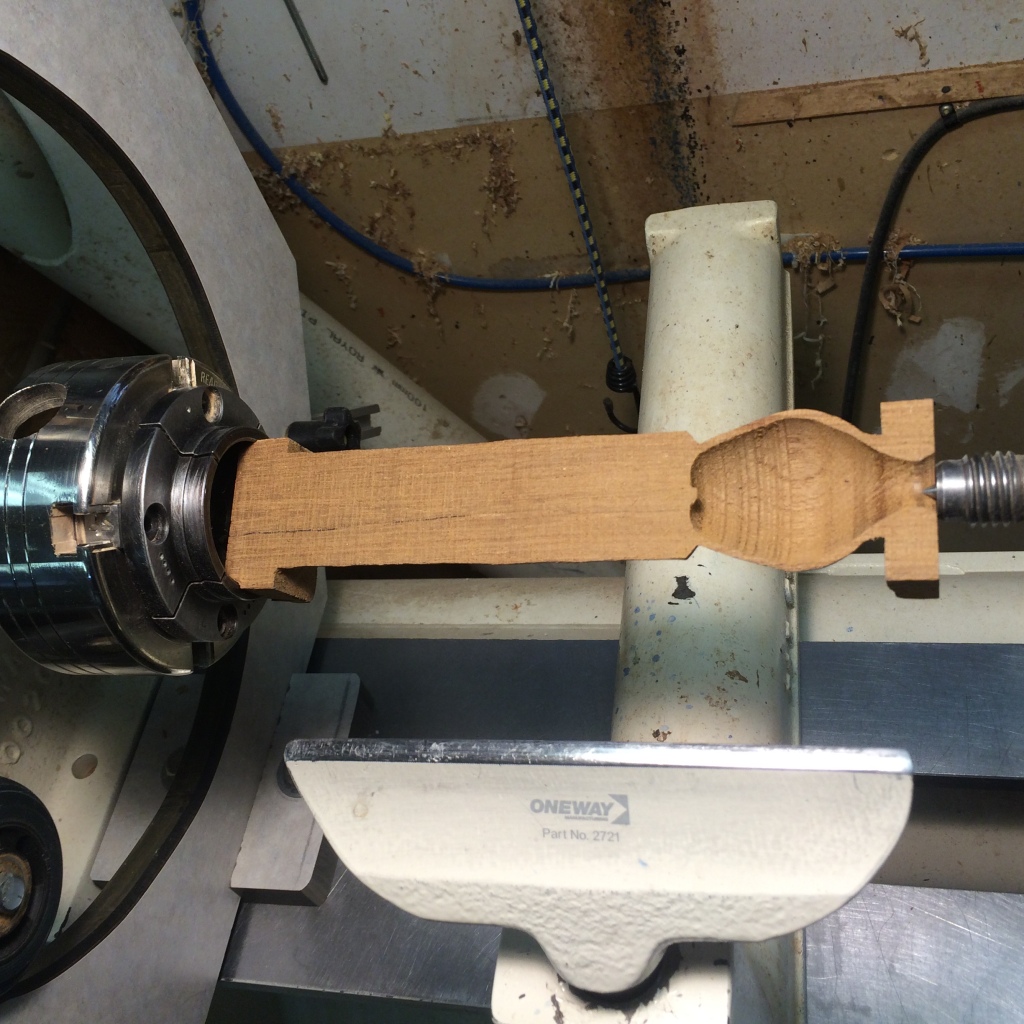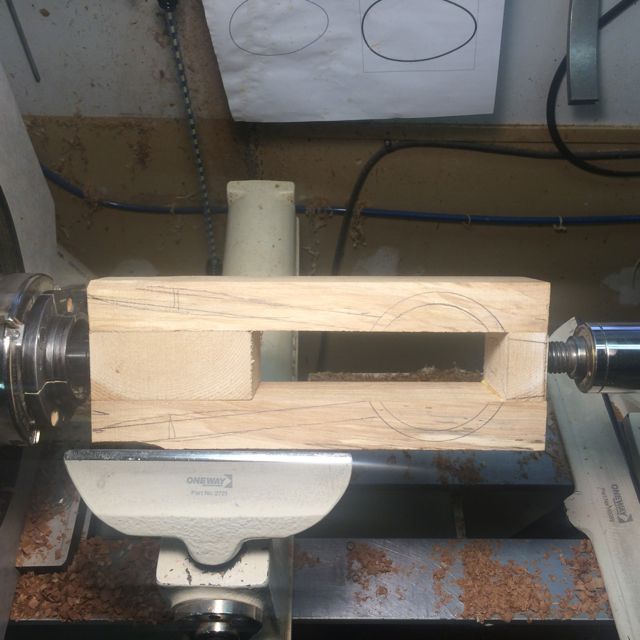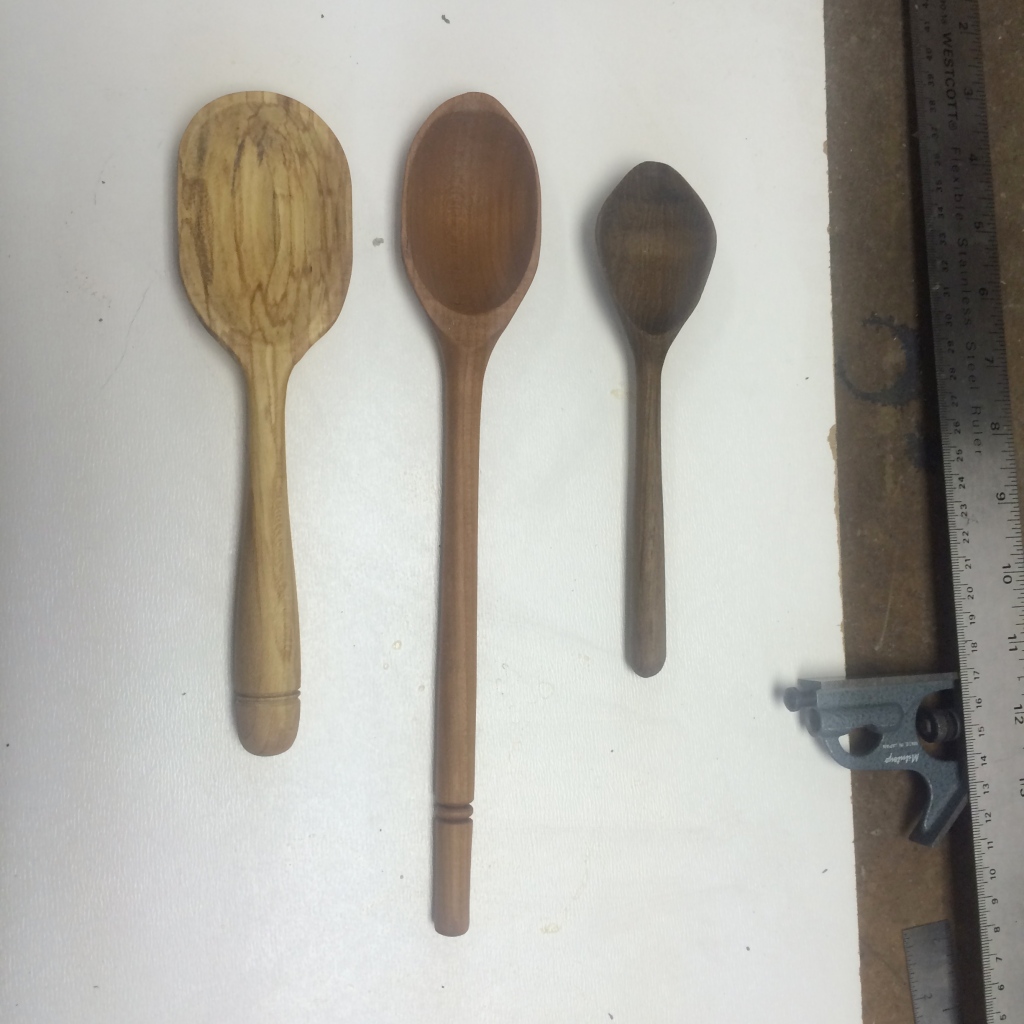Last week while I was hollowing an 8″ tall cup form I decided it was past time that I tried the Pro-Forme Hollowing tool that I bought about 5 years ago.
It has been sitting mixed in with the rest of my hollowing tools and every once in a while I would take the plastic cover off of it and then put it back. I had read that it was especially nice in end grain and even better if the wood is green. Today was the day for a trial. I put it in my Kobra Hollower, but before I started to hollow I drilled a hole with one of my modified spade bits to the depth I wanted to go. The Pro-Forme was set at the factory and worked like a charm. With practice I’m certain I could get as good or better finish inside than is possible with a scraper. I did notice that as I got beyond about 6″ the 1/2″ bar I experienced a little vibration but I was able to go the full 8″.
Thinking about how much I liked the way the tool worked and seeing that I had a spare cutter I felt I should do something to help with deeper hollowing. My first thought was to ask a friend of mine if he could make me a 1″ bar with the end modified to fit the Pro-Forme but this of course required me to buy a 1″ polished steel bar and seemed like it might be more work than it was worth.
I realized I already had a 1″ bar for my Kobra and all I needed was a short extension that could be installed in that bar to which I could attach the Proforma.
Luckily I have a few pieces of drill rod hanging around my shop and was able to find a 2 1/2″ long piece of 1/2″.
I clamped it in a vise and proceeded to notch it out with a zip cut blade my cordless grinder.


After some grinding, polishing and filing I completed the adaptor and hopefully can now go up to about 14″ deep.
